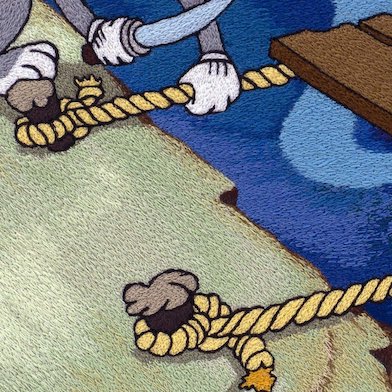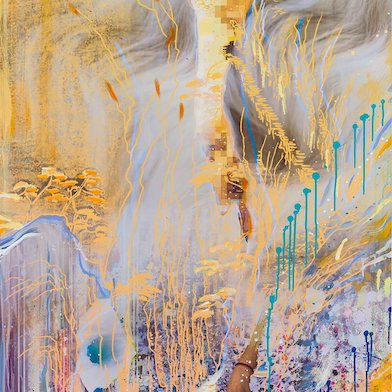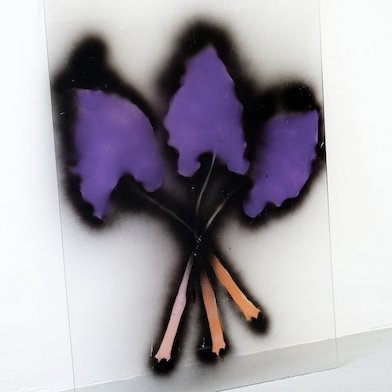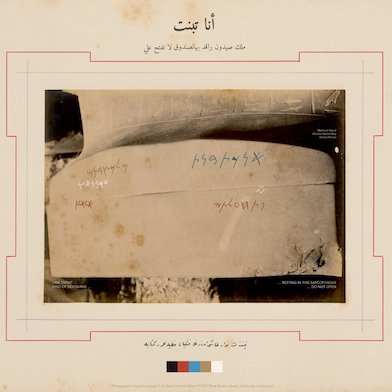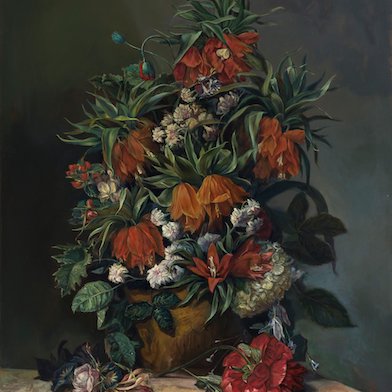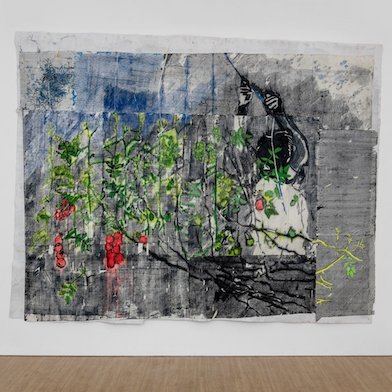Open: Tue-Sat 11am-6pm
Visit
Traitor and Tradition
ARNDT, Berlin
Sat 20 Sep 2014 to Sat 18 Oct 2014
Potsdamer Straße 96, D-10785 Traitor and Tradition
Tue-Sat 11am-6pm
Traitor and Tradition, curated by Erin Gleeson at ARNDT, Berlin, from September 20 to October 18, 2014
ARNDT Berlin is proud to present the group exhibition Traitor and Tradition in corporation with American curator Erin Gleeson.
Artworks by Mit Jai Inn and Pinaree Sanpitak from Thailand will be shown, as well as works by Sopheap Pich and Svay Sareth from Cambodia. Erin Gleeson (*1979) has been looking at strands of conceptual art from countries in mainland Southeast Asia including Thailand, Cambodia and Vietnam. Traitor and Tradition a thought borrowed from Lucy Lippard (arthistorian USA, *1937), who imagined that artists working in the minimalist/conceptual wave of sculpture in the 1960s must have intuitively sensed that the words 'traitor' and 'tradition' are from the same [latin] root.
The parallel line between conceptual art from Southeast Asia and North America consists on the one hand side of the conversion of industrial used everyday-objects: The minimalists and conceptual artists used mostly aluminum, steel or wood for their sculptures; The artist Pich (Cambodia, *1971, who exhibited at the dOCUMENTA(13) recently) forms abstract reliefs and sculptures with the regional material bamboo. The other parallel line is the Traitor and his betrayal on the traditional form, which is the prior aspect on a non-figurative art on canvas as well as in sculptures. Both generations inspire with their materials everyday-associations within the viewer and transform them in an art context.
Sareth‘s (Cambodia, *1972) work of art pursues critical and liberating goals. His sculptures, installations and long term performances inspire images of war and the experience of a refugee and survival, as well as the image of adventure and failure. When looking at his bio the history of Cambodia together, it is obvious that he is engaged with the timeless and universal cycle of violence and regeneration.
Pinaree’s (Thailand, *1961) primary inspiration has been the female body, distilled to its most basic forms and imbued with an ethereal spirituality. The quiet, Zen-like abstraction of her work owes something to her training in Japan and sets it somewhat apart from the colorful intensity of much Thai art. Her rigorous focus on the female form, explored through a variety of media – painting, drawing, sculpture, textiles, ceramics and performance – has resulted in an astoundingly varied and innovative body of work.
Mit Jai Inn (Thailand, *1960) is a pioneer of Thai contemporary art. He is very active in the Chiang Mai community, heavily involved in both the political and art scenes. His artwork is a testimony of his attitude toward life and his political point of view. His unconventional way of thinking is reflected in works that cross the boundary between painting and sculpture. He refuses to be categorized into any specific genre. The majority of his works involve the application of a thick layer of oil colour and pigment to canvas in an abstract form. His colours range from pastels to bright neon. There is no limit to how the finished work can be displayed.
Curatorial statement:
“I am looking at strands of conceptual art from countries in mainland Southeast Asia including Thailand, Cambodia and Vietnam. TRAITOR AND TRADITION, a thought borrowed from Lucy Lippard, who imagined that artists working in the minimalist/conceptual wave of sculpture in the 60s and 70s in North America must have intuitively sensed that the words 'traitor' and 'tradition' are from the same [latin] root.
Though it is not geography or specifically the linguistic reference I am responding to - it is the intuitive aspect of artists’ relationships with form and material that has generated parallel readings of living traditional practices and economies both at home and abroad. Regarding the later - I am also interested in showing Europe, especially Berlin a non-figurative, non-explicitly political approach to art making from Southeast Asia through different generations of artists.”
Erin Gleeson
Traitor and Tradition, curated by Erin Gleeson at ARNDT, Berlin, from September 20 to October 18, 2014
ARNDT Berlin is proud to present the group exhibition Traitor and Tradition in corporation with American curator Erin Gleeson.
Artworks by Mit Jai Inn and Pinaree Sanpitak from Thailand will be shown, as well as works by Sopheap Pich and Svay Sareth from Cambodia. Erin Gleeson (*1979) has been looking at strands of conceptual art from countries in mainland Southeast Asia including Thailand, Cambodia and Vietnam. Traitor and Tradition a thought borrowed from Lucy Lippard (arthistorian USA, *1937), who imagined that artists working in the minimalist/conceptual wave of sculpture in the 1960s must have intuitively sensed that the words 'traitor' and 'tradition' are from the same [latin] root.
The parallel line between conceptual art from Southeast Asia and North America consists on the one hand side of the conversion of industrial used everyday-objects: The minimalists and conceptual artists used mostly aluminum, steel or wood for their sculptures; The artist Pich (Cambodia, *1971, who exhibited at the dOCUMENTA(13) recently) forms abstract reliefs and sculptures with the regional material bamboo. The other parallel line is the Traitor and his betrayal on the traditional form, which is the prior aspect on a non-figurative art on canvas as well as in sculptures. Both generations inspire with their materials everyday-associations within the viewer and transform them in an art context.
Sareth‘s (Cambodia, *1972) work of art pursues critical and liberating goals. His sculptures, installations and long term performances inspire images of war and the experience of a refugee and survival, as well as the image of adventure and failure. When looking at his bio the history of Cambodia together, it is obvious that he is engaged with the timeless and universal cycle of violence and regeneration.
Pinaree’s (Thailand, *1961) primary inspiration has been the female body, distilled to its most basic forms and imbued with an ethereal spirituality. The quiet, Zen-like abstraction of her work owes something to her training in Japan and sets it somewhat apart from the colorful intensity of much Thai art. Her rigorous focus on the female form, explored through a variety of media – painting, drawing, sculpture, textiles, ceramics and performance – has resulted in an astoundingly varied and innovative body of work.
Mit Jai Inn (Thailand, *1960) is a pioneer of Thai contemporary art. He is very active in the Chiang Mai community, heavily involved in both the political and art scenes. His artwork is a testimony of his attitude toward life and his political point of view. His unconventional way of thinking is reflected in works that cross the boundary between painting and sculpture. He refuses to be categorized into any specific genre. The majority of his works involve the application of a thick layer of oil colour and pigment to canvas in an abstract form. His colours range from pastels to bright neon. There is no limit to how the finished work can be displayed.
Curatorial statement:
“I am looking at strands of conceptual art from countries in mainland Southeast Asia including Thailand, Cambodia and Vietnam. TRAITOR AND TRADITION, a thought borrowed from Lucy Lippard, who imagined that artists working in the minimalist/conceptual wave of sculpture in the 60s and 70s in North America must have intuitively sensed that the words 'traitor' and 'tradition' are from the same [latin] root.
Though it is not geography or specifically the linguistic reference I am responding to - it is the intuitive aspect of artists’ relationships with form and material that has generated parallel readings of living traditional practices and economies both at home and abroad. Regarding the later - I am also interested in showing Europe, especially Berlin a non-figurative, non-explicitly political approach to art making from Southeast Asia through different generations of artists.”
Erin Gleeson
